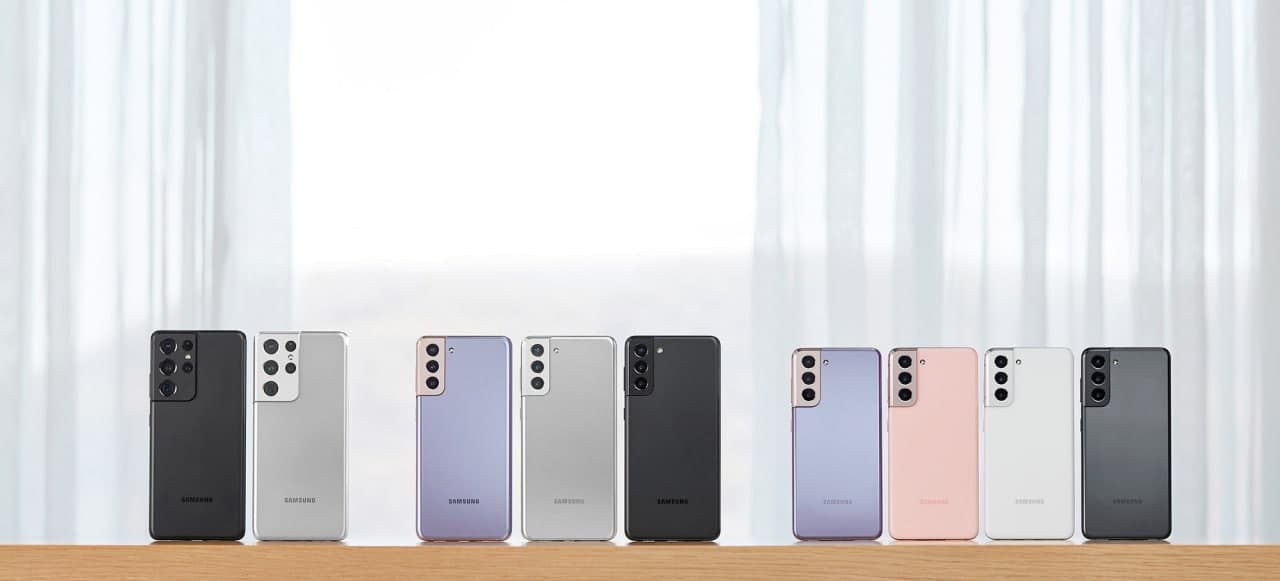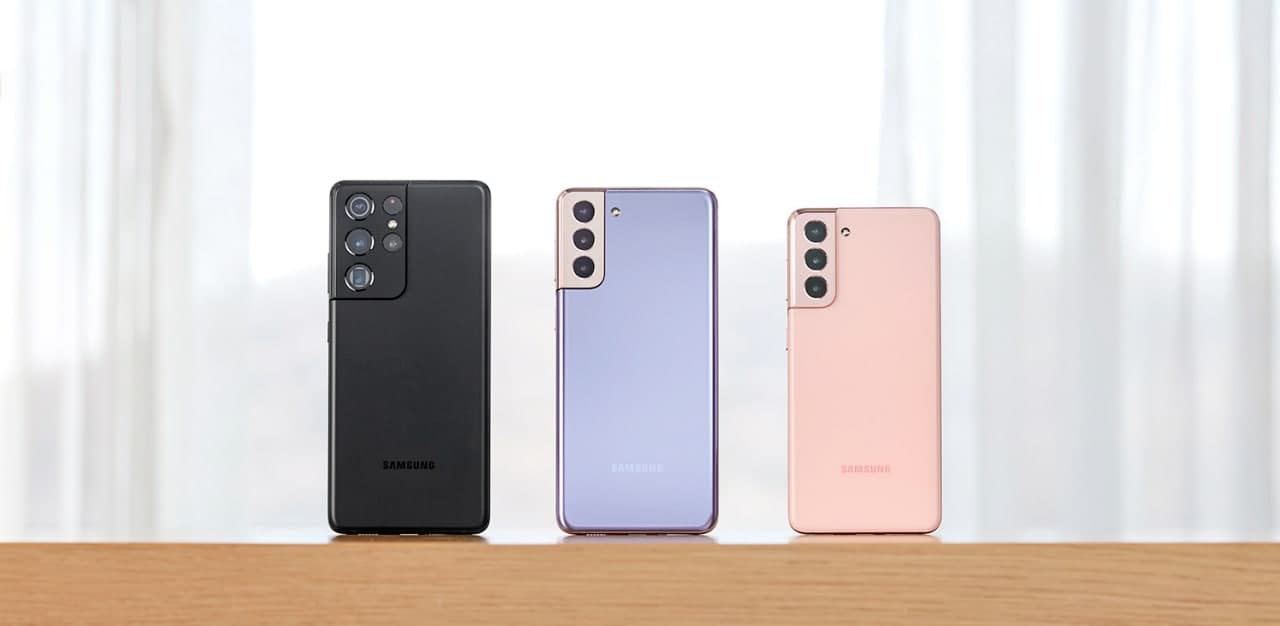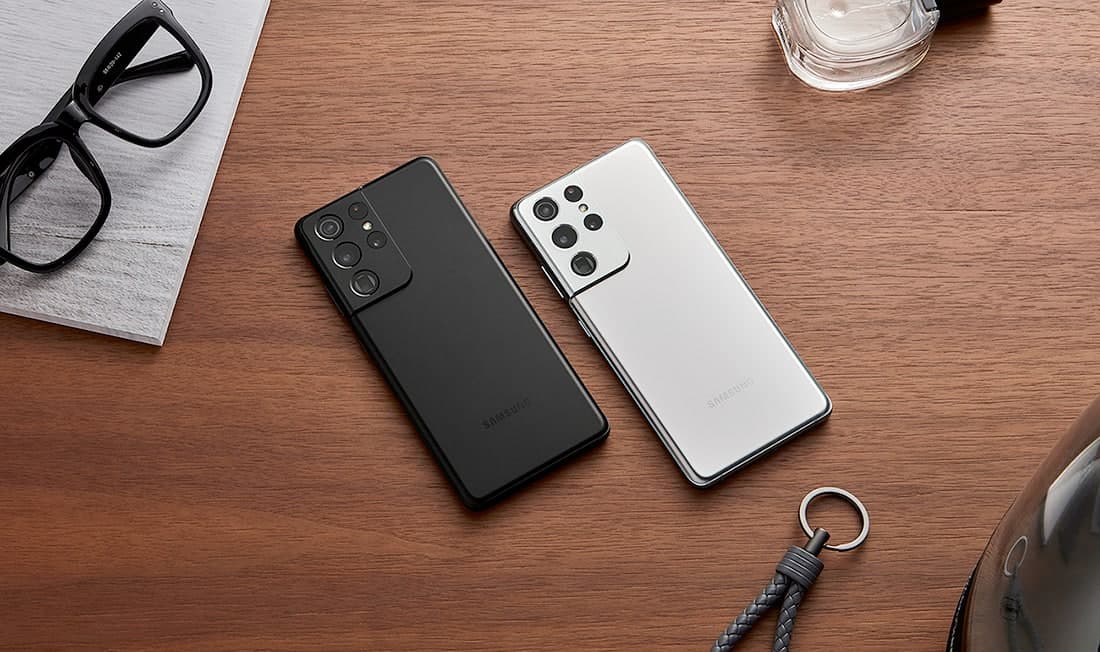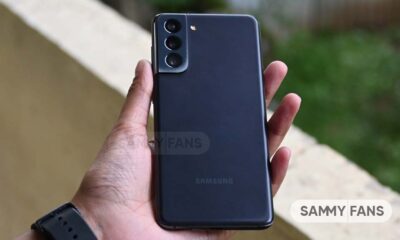
Samsung Galaxy S21 series officially launched with Snapdragon 888, S Pen, One UI 3.1, and less price
Samsung Galaxy S21 series officially launched with Snapdragon 888, S Pen, One UI 3.1, and less price
Samsung is taking a major step in the right direction in 2021, and the new Galaxy S21 will cost $200 less. The original model of the Galaxy S21 series is the Galaxy S21, starting price is $799, down from last year’s $999.
Despite the price reduction, it still provides a very complete product package. It is equipped with Snapdragon 888 processor, three rear cameras, and 5G, this time the smallest phone also includes mmWave.
The Galaxy S21+ has almost the same design, except for the larger display, which starts at $999. However, there is a big difference between these two phones. The S21+ has Samsung’s regular glass back cover, while the normal Galaxy S21 has matte plastic similar to the Galaxy S20 FE.
JOIN SAMMY FANS ON TELEGRAM

Both phones are downgraded to 1080p displays – the S21 is 6.2 inches and the S21 + 6.7 inches, but with Samsung’s adaptive 120Hz display, the refresh rate can be adjusted to better suit the content and save battery. Both phones come with 8GB of RAM and lack microSD expansion. You will also see an IP68 waterproof performance, Qi wireless charging, Android 11 / One UI 3.1, and a larger battery.

In the camera department, Samsung Galaxy S21 and S21+ come with a 12MP sensor for the main wide-angle camera and auxiliary ultra-wide-angle camera, with a 120-degree field of view. However, the telephoto camera uses 64MP to create a 3x hybrid zoom. Samsung also offers 30x space zoom on both devices and has a 10MP selfie shooter in a punch-hole display.
On the other hand, Samsung also has the Galaxy S21 Ultra, which is the top flagship of this year. It has the same key specifications, the Snapdragon 888, no microSD slot, adaptive 120Hz, and ultrasonic fingerprint scanner. The S21 Ultra has 12GB of RAM, as well as a top model with 16GB of RAM and 512GB of storage space.

The Galaxy S21 Ultra features a 6.8-inch QHD + curved display, which uses the new Eye Comfort Shield like the S21 and S21+. This new technology is designed to reduce harmful blue light at any time (not only at night) without damaging your eyes.
Samsung’s display on the Galaxy S21 Ultra can also reach a peak brightness of 1,500 nits. The center punch-hole display features a 40MP selfie camera upgrade.

Talking about cameras, the main camera of the Galaxy S21 Ultra is a 108MP sensor with the same laser autofocus system that we found on the Galaxy Note 20 Ultra. There is a 12MP camera for ultra-wide-angle shooting and two 10MP sensors for zooming. The first is a 3x optical zoom lens, and the second is a 10x zoom.
In combination, Samsung can use them to achieve 100x “space zoom”, which should be able to see the higher quality this time than last year’s S20 Ultra mid-level display. Samsung reported that users can shoot at 4k/60fps on the Galaxy S21 Ultra for every lens (even a selfie camera). In professional mode, photos also have a new 12-bit RAW option.

Samsung also gave S Pen support to the Galaxy S21 Ultra, the first support of the Galaxy S series. However, unlike the Galaxy Note series, the Ultra does not have a dedicated slot to store the S Pen in the phone. Samsung will sell the stylus pen with cases that can store the stylus.

The regular Galaxy S21 will come in Phantom Violet, Phantom Gray, Phantom Pink, and Phantom White, while the Galaxy S 21+ will come in Phantom Violet, Phantom Black, and Phantom Silver. The Galaxy S21 Ultra will use Phantom Silver and Phantom Black.
The Samsung Galaxy S21 series will be launched in the US on 29 January, pre-orders will start on 14 January. The basic model is priced at $799, while the S21+ is priced at $999, and the S21 Ultra is priced at $1,199.
Pre-order offers include Samsung.com’s $100, $150, or $200 credit and free Galaxy Smart tag. Trade discounts can also save up to $700.
News
Your Galaxy is safer than you think, Samsung reveals how

Samsung revealed its Project Infinity, which aims to make your Galaxy devices safer against cyber threats. Android is vulnerable due to its open-source nature, making regular security updates necessary for your Galaxy phone’s security.
Project Infinity of Samsung is a classified operation, working on safeguarding Galaxy devices and users around the clock for safer operations. Samsung Newsroom has recently published a blog post, revealing insights from specialist meetings.
Cyber Threat Intelligence
Samsung’s Cyber Threat Intelligence (CTI) taskforce is a reconnaissance unit within Project Infinity along with the Red (RED), Blue (BLUE), and Purple (PURPLE) Teams, which go beyond lab conditions to identify real-world dangers.
- RED and BLUE perform proactive attack and defense functions, seeking out vulnerabilities and taking measures against them.
- PURPLE is a special operations unit that acts as both a sword and shield for specific critical areas.

It’s worth noting that Samsung has deployed RED, BLUE, and PURPLE teams in various countries including Vietnam, Poland, Ukraine and Brazil. CTI is dedicated to identifying potential threats and stopping hackers from taking control of your device.
“Once we spot these kinds of threats, we collaborate with developers and operators to lock everything down for preventing attacks,” said Ranger, a CTI member.
Samsung Security Updates
Earlier this year, Samsung announced it to support flagship Galaxy devices for seven years. The new policy applies to all flagship Galaxy devices launched after the Galaxy S24 series. It’s the longest software support offered by any mobile brand.
These updates mean customers can safely use their phones for longer. As cyber threats become more common than you think, security updates are much more crucial to safeguard your Galaxy from any potential threat of vulnerability.
News
Samsung Gaming Hub adds the biggest Xbox Game Pass titles

Owners of select Samsung Smart TVs, monitors, The Premiere 7 & 9 projectors, or The Freestyle 2nd Gen can stream Call of Duty: Black Ops 6, Flight Simulator 2024 and hundreds of other games with Gaming Hub Xbox Game Pass.
Call of Duty: Black Ops 6 and Flight Simulator 2024 are two of the most popular games of 2024. Thanks to Samsung Gaming Hub, you don’t need to download any of the Xbox Game Pass titles, no meaning no storage required – just jump in and play.
The company has also built an engaging gameplay experience designed by fans, for fans through The Six, challenging players’ knowledge and providing another way to interact with the world of Call of Duty: Black Ops 6.
Notably, Samsung’s Gaming Hub is available on a variety of Samsung screens. It includes the AI-powered 2024 TV lineup, monitors, projectors, The Premiere, and The Freestyle 2nd Gen projector, offering instant access to console-free gaming.
Anyone with a Samsung Smart TV will be able to use their remote to jump in and play. This way, Gaming Hub provides a co-branded experience, giving Call of Duty fans another way to engage with the franchise they love.
For starters: The Six offers daily trivia where players can answer a series of six questions in competition with other players around the world. Correct answers with the fastest response time will achieve higher scores.
News
Surprising: Samsung to launch Galaxy ixi-O AI Phone next year

Samsung could launch the Galaxy ixi-O AI Phone next year. The company has collaborated with LG Uplus to develop a custom smartphone. The device is said to feature Galaxy AI and LG Uplus’s AI call assistant ixi-O.
Sources citing KEDGlobal revealed that Samsung and LG Uplus working together to develop the Galaxy ixi-O AI Phone. It’s a big development in the smartphone industry, while the handset is highly likely to be Korea-limited.
Samsung fans are well aware of the Galaxy AI feature suite. ixi-O is an AI-powered digital assistant developed by Korean carrier LG Uplus. The company plans to enter the smartphone market, featuring its own-developed AI assistant.
The report indicates that Samsung and LG Uplus’ ixi-O AI Phone will launch as early as next year. The development project focuses on crafting a “real AI phone” that goes beyond simply integrating AI assistant services into a smartphone.
ixi-O comes with useful features such as AI call answering, detecting voice phishing in real-time, recording and summarizing phone calls and converting voice conversation into text – all within an on-device environment.

Image: ixi-O AI | LG Uplus Newsroom
Based on specifications, the Galaxy ixi-O AI Phone will be based on a Galaxy phone available globally. The design will match with a global Galaxy smartphone, but the software may be tweaked as per the carrier’s requirements.
A custom Galaxy phone isn’t shocking or impossible in South Korea. Samsung releases Quantum, Buddy, and Jump-branded phones in the market. The company collaborates with Korean carriers to bring these devices to mainland Korea.
The carrier introduced an on-device AI-powered ixi-O assistant earlier this month. LG Uplus will initially target its consumer base for the new AI Phone. However, the AI Assistant may be expanded to a broader audience across Korea.










